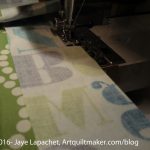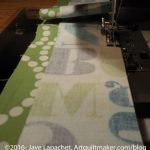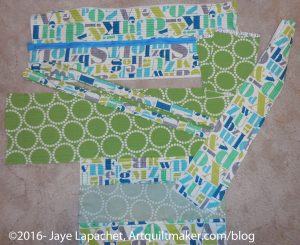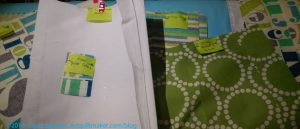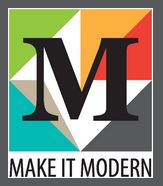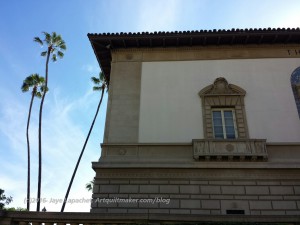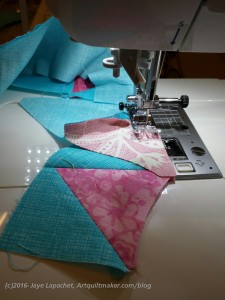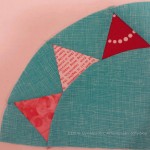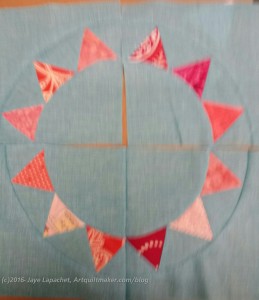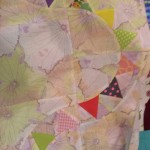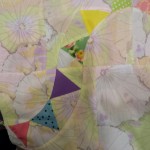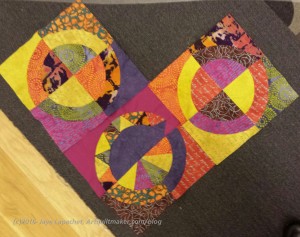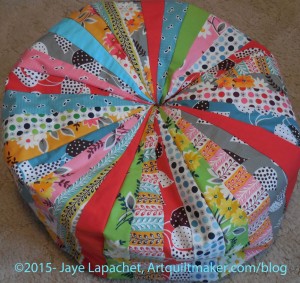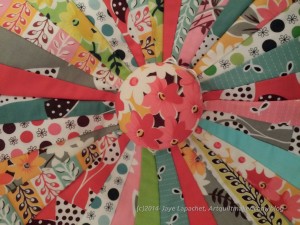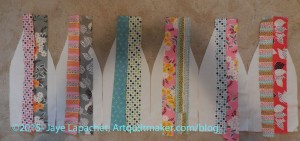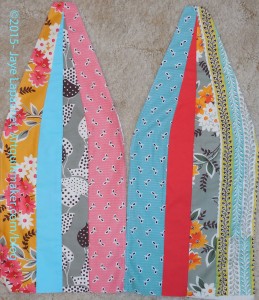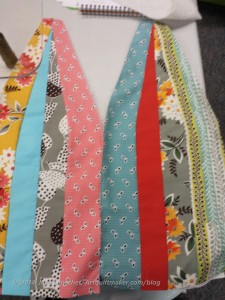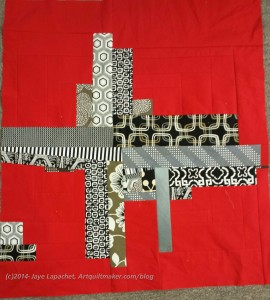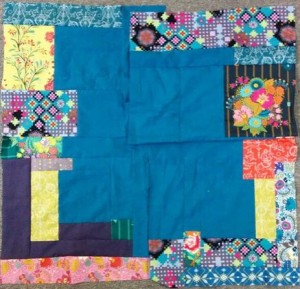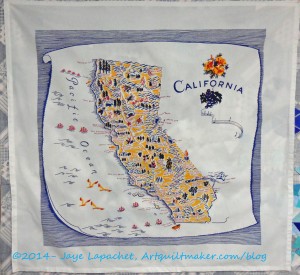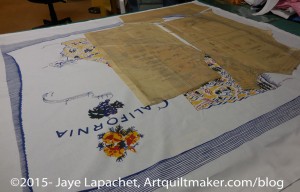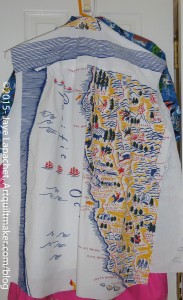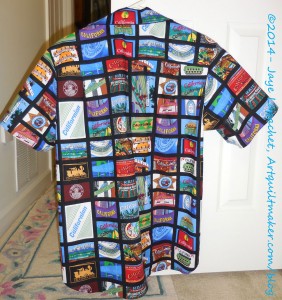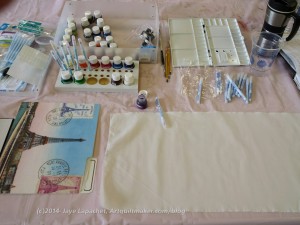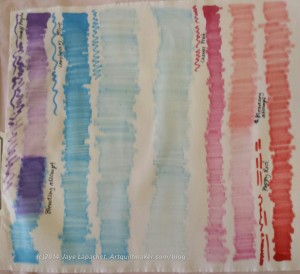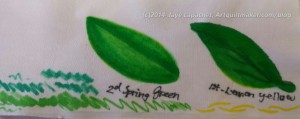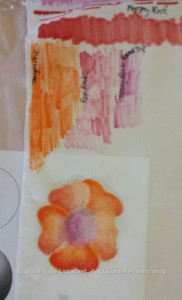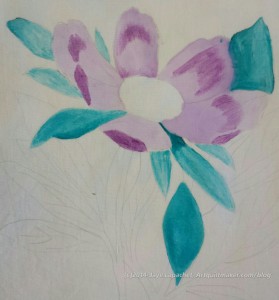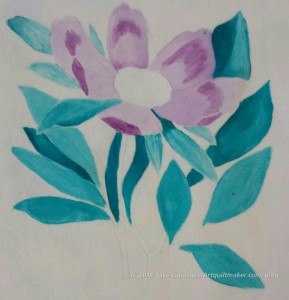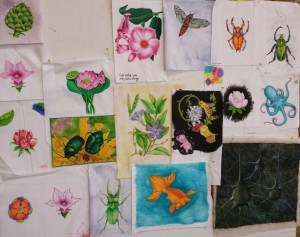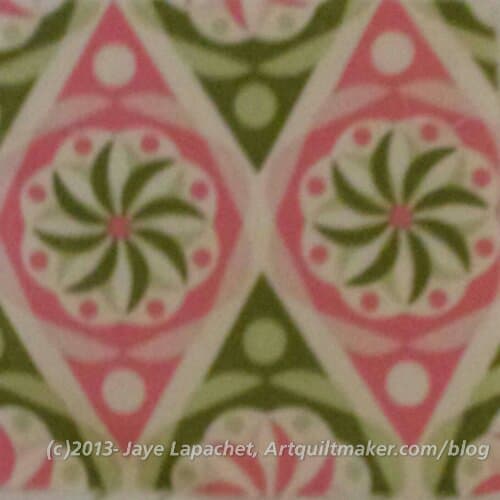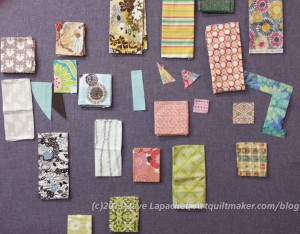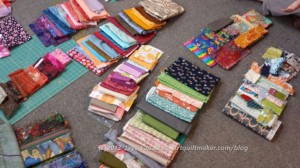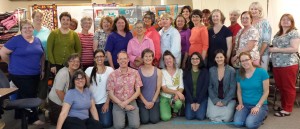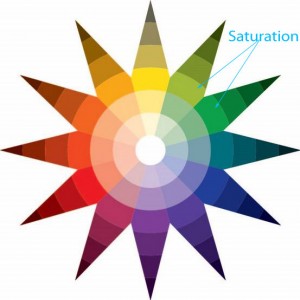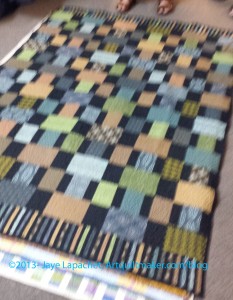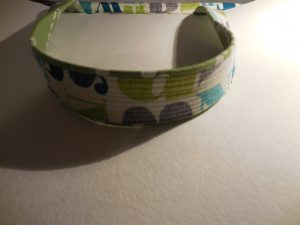
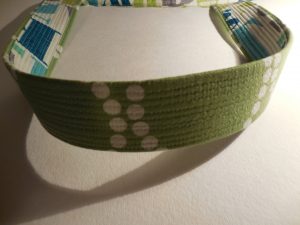
As you know I have been working on the homework for the Noodlehead Cargo Duffle*. This is one of the most difficult bags I have ever made, including the Liesl Backpack, though I think the directions are the problem and not the actual bag. Also, there is a lot of prep and, as you know, I like to get straight to the sewing. As I have said, the directions are too brief for me.
These handles can be used for other types of bags, so this tutorial creates a useful skill. If you want to use webbing, look at the directions in the Running with Scissors pattern to learn how Annie Unrein of byAnnie covers webbing with fabric.
In this case, I couldn’t understand the directions for making the handles. I looked at them several times until I decided just to try what they said and see if that worked. I did what the directions said, though they didn’t make sense, and the directions actually worked! Me or the directions? You decide.
Since I think the pattern instructions just need a bit of explanation for those of us who need to know more why in their patterns, I wrote up a tutorial.
Supplies
-1.5″ cotton webbing.
-fabric
-BSK
-Shapeflex (optional)

- Cut strips according to the directions or according to your needs. I made mine a little longer as I wanted to have more carrying options.
2. Sew strips together. They are not the same width so they will not line up, width-wise, exactly.

3. Press seams open. This is not critical and if you don’t want to, press how you like. I press seams open on handles, because I want to reduce bulk. You get a lot of bulk in handles, especially if you add some kind of filler like cotton webbing, which I used in these straps, or Soft & Stable or any other kind of interfacing. Pressing the seams reduces bulk.
Optional: At this point you can add some ShapeFlex to the handles to add strength. If you add ShapeFlex, cut a piece that covers both strips and covers the seam. It will add strength to the seam.

4. Fold the long side of the raw edges towards the center seam. I folded the Pearl Bracelets green piece first, but where you start doesn’t really matter, I don’t think.
5. Press fabric so there is a crease in the fold.

6. Next, fold the second long side, raw edge towards the center seam (yes, it is slightly off center, which is part of what confused me). This is the fabric (text fabric) with the smaller width.
7. Make sure to line both raw edges up with seam you just pressed open. Each different fabric will be a different folded width.
7. Press just folded fabric so there is a crease in the fold.

8. Fold the fabric with the smaller width (mine is the alphabet fabric) up towards the wider fabric (green Pearl Bracelets). There will be some green showing, which is what you want.
9. Press so you have crisp folds. Some of the wider fabric (green Pearl Bracelets, in my case) will show. This detail makes an accent.
10. Now unfold and add your cotton webbing or other stiffener. I used 1/5″ cotton webbing. I had never used this and was pleased at how well my machine sewed through it.
11. Refold so the cotton webbing does not show.

12. Quilt lines lengthwise, approximately 3/8″ apart, starting with the open seam. This will make the handle is very dense with quilting and add to the strength.
Ta da! You have very nice handles that will be sturdy enough to carry a heavy bag.
Ruth, being the super intelligent woman she is provided a link after I had figured out how to make these handles. I did search, but didn’t come up with the tutorial. I hope you like my instructions for the Cargo Duffle handles, which will, with any luck, come up in search results for others who try to make the Cargo Duffle.
*I really don’t know if the project includes the spelling ‘duffel’ or ‘duffle’. I am going with ‘duffle’ as that is what the dictionary says. You may want to search both, if you do any Google searching in order to get all the results.
